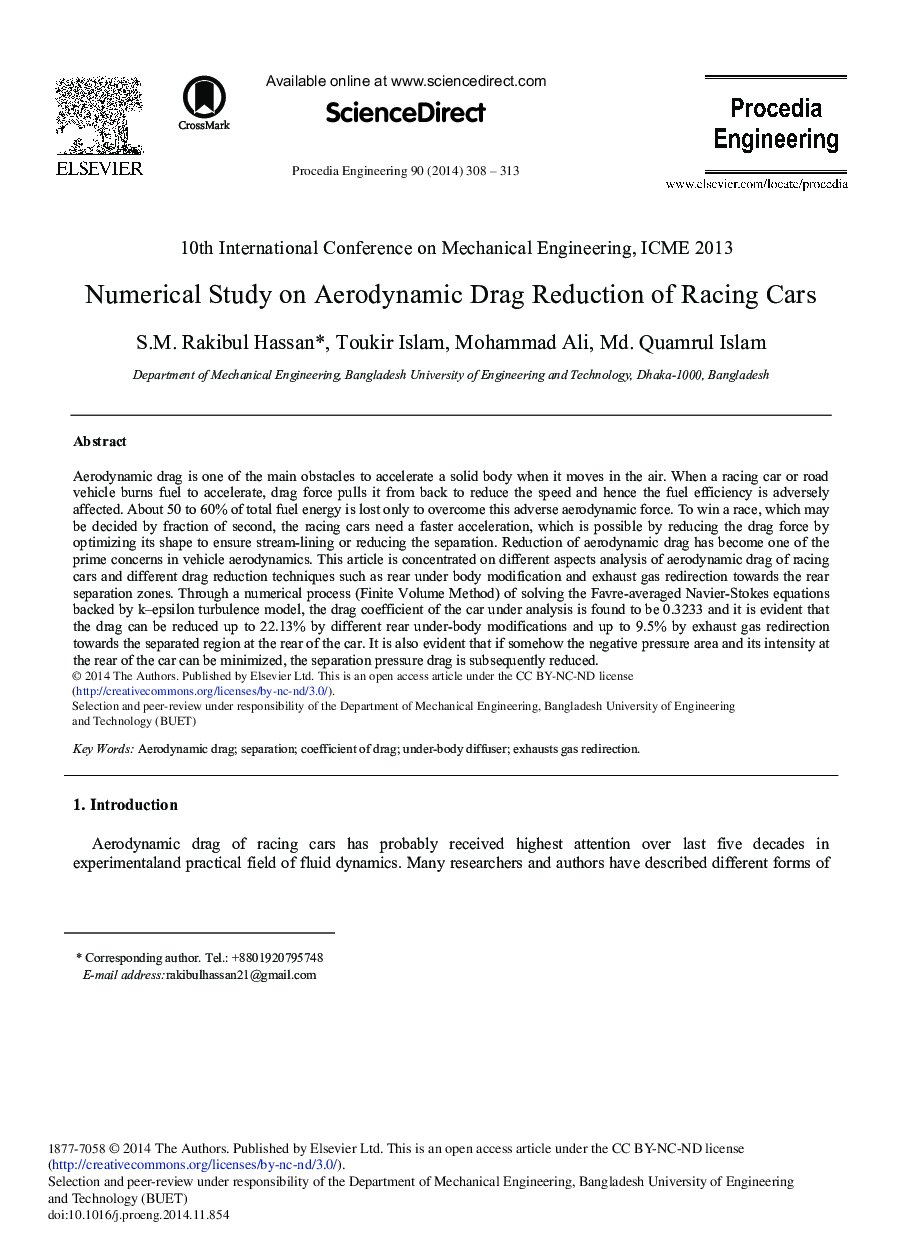| کد مقاله | کد نشریه | سال انتشار | مقاله انگلیسی | نسخه تمام متن |
|---|---|---|---|---|
| 857307 | 1470736 | 2014 | 6 صفحه PDF | دانلود رایگان |
Aerodynamic drag is one of the main obstacles to accelerate a solid body when it moves in the air. When a racing car or road vehicle burns fuel to accelerate, drag force pulls it from back to reduce the speed and hence the fuel efficiency is adversely affected. About 50 to 60% of total fuel energy is lost only to overcome this adverse aerodynamic force. To win a race, which may be decided by fraction of second, the racing cars need a faster acceleration, which is possible by reducing the drag force by optimizing its shape to ensure stream-lining or reducing the separation. Reduction of aerodynamic drag has become one of the prime concerns in vehicle aerodynamics. This article is concentrated on different aspects analysis of aerodynamic drag of racing cars and different drag reduction techniques such as rear under body modification and exhaust gas redirection towards the rear separation zones. Through a numerical process (Finite Volume Method) of solving the Favre-averaged Navier-Stokes equations backed by k–epsilon turbulence model, the drag coefficient of the car under analysis is found to be 0.3233 and it is evident that the drag can be reduced up to 22.13% by different rear under-body modifications and up to 9.5% by exhaust gas redirection towards the separated region at the rear of the car. It is also evident that if somehow the negative pressure area and its intensity at the rear of the car can be minimized, the separation pressure drag is subsequently reduced.
Journal: Procedia Engineering - Volume 90, 2014, Pages 308-313
